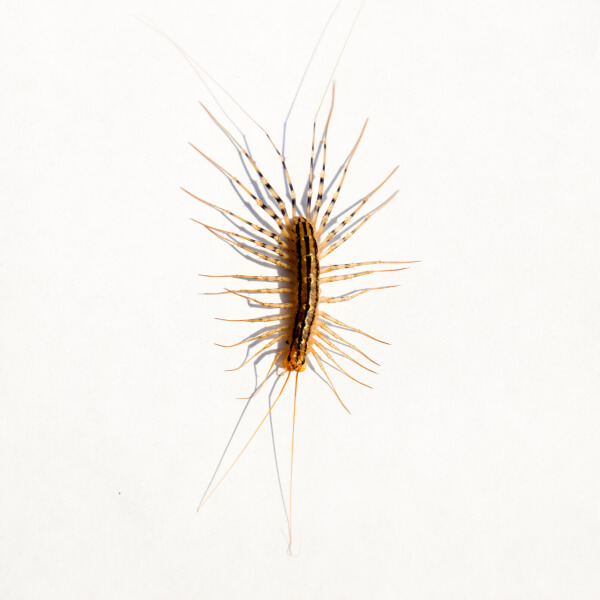
House Centipede
Category Insects
Actual Size: 1 ½ inches
Characteristics: Long, thin bodies that are typically yellowish or light brown, with three dark stripes running lengthwise. They have up to 15 pairs of long, spindly legs.
Legs: Up to 30
Antennae: No
Wings: No
Habitat: They are attracted to damp areas, and outdoors, you can find them under leaves and stones. Indoors, they tend to hide in crawl spaces, bathrooms, and other similar spots.
Habits:
- They prefer damp areas like basements, crawl spaces, bathrooms, and kitchens.
- They are known for their incredible speed and can move quickly across walls, floors, and ceilings.
- Carnivorous and feeds on other small pests, such as ants, spiders, cockroaches, and termites.
House Centipedes in Florida
House centipedes are common across the United States and are known for their 15 pairs of long, slender legs. While their appearance can be intimidating, these invertebrates are helpful in controlling pests like cockroaches and spiders. Though they can be found both indoors and outdoors, encountering one in your sink or bathtub can be unsettling. Outdoors, they pose no harm, but indoors, they may be seen as pests.
House Centipede Habitat
House centipedes are drawn to damp environments and can often be found outdoors under stones, boards, or sticks, as well as beneath moist leaf litter and other organic debris. Indoors, they are most commonly seen in damp areas like basements, closets, and bathrooms, where they prey on insects and spiders. When disturbed, they quickly retreat to dark hiding spots. Numerous house centipedes in your home may be a sign that a moisture problem needs to be dealt with.
House Centipede Behaviors, Threats, or Dangers
House centipedes possess a pair of poison claws behind their head, which they use to inject venom into their prey, usually small insects, paralyzing them. Although their weak jaws can penetrate the skin, it’s difficult to do so. Their bites can cause swelling and pain, but they are generally no more serious than a bee sting. Considered nuisance pests, house centipedes enter yards searching for food. If they find food near exterior walls and there are cracks or crevices, they may accidentally make their way inside.
For help with house centipedes on your property, contact pest control experts at Arrow Environmental Services.
